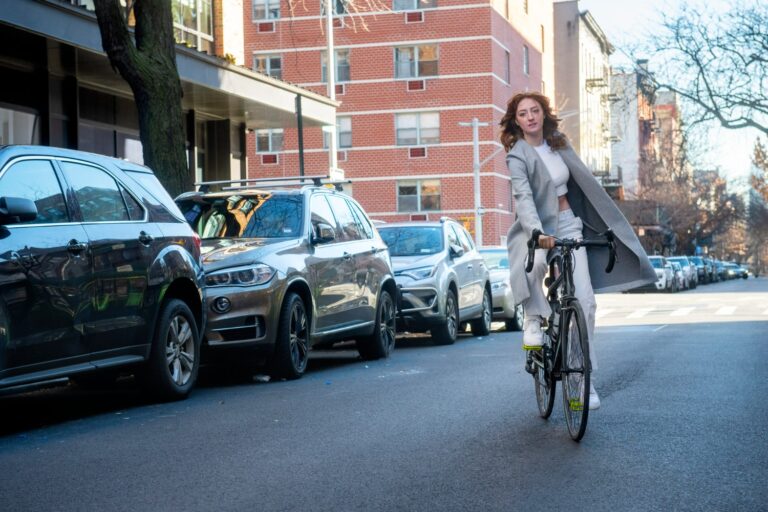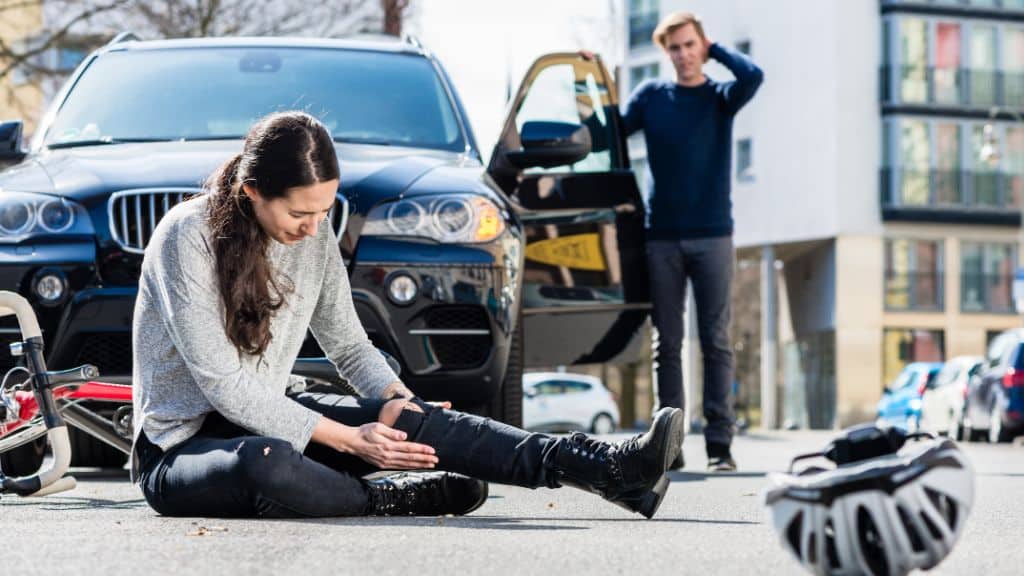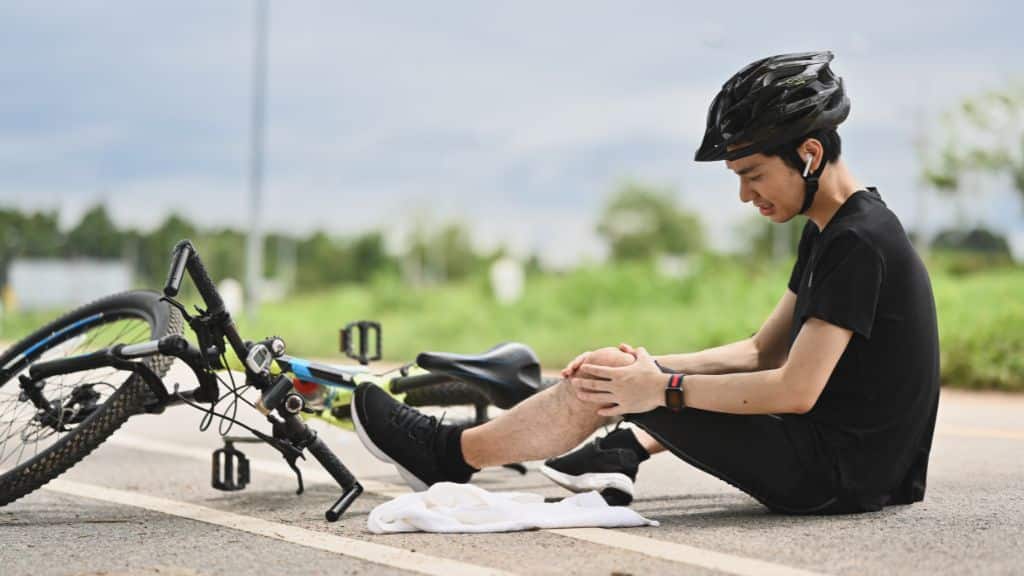When a bicycle and a car collide, the question of who is at fault can be tricky. Both cyclists and drivers share the road, and determining fault requires looking at the details of the accident.
This can involve analyzing traffic laws, the behavior of both parties, and even the condition of the road. In most cases, one party is held responsible, but sometimes the fault is shared.
Bicycle Accident Stats
| Statistic | Details |
|---|---|
| Bicycle Death Increase (2022) | 10% increase in preventable bicycle deaths in 2022. |
| 10-Year Death Increase | 47% rise in deaths from 925 in 2013 to 1,360 in 2022. |
| Nonfatal Injury Decline | Nonfatal injuries decreased by 32% from 493,884 to 337,738 between 2013 and 2022. |
| Peak Month for Bicycle Deaths | August recorded the highest deaths (156), with most fatalities occurring between July and October. |
| Gender Disparity in Deaths | 87% of all bicycle-related deaths involved males, eight times the female fatality rate. |
| Motor-Vehicle Related Deaths | 1,105 bicyclists were killed in motor-vehicle crashes in 2022, representing 2.6% of all traffic deaths. |
| Helmet Efficacy | Helmets reduce the risk of head injury by 60% and brain injury by 58%. |
| Helmet Laws | As of 2024, 22 states, D.C., and over 200 localities have helmet-use laws in place. |
Determining Liability in Bicycle-Car Collisions
When determining who is at fault in a bicycle-car accident, it’s important to examine the specific details of the incident.
Fault can lie with either the cyclist or the driver, depending on the circumstances. In some cases, both may share the blame, which can affect how insurance claims and lawsuits are handled.
Common Causes of Bicycle-Car Collisions
Bicycle-car collisions are unfortunate events that can result in serious injuries and property damage. Understanding the common causes of these accidents can help both cyclists and drivers take preventative measures.
- Driver Distraction
- Cyclist Ignoring Traffic Signals
- Dooring Incidents
- Cyclist Weaving Between Lanes
- Failure to Yield Right of Way
- Poor Visibility Conditions
- Speeding and Sudden Braking
- Wrong-Way Cycling
- Lack of Bike Lanes
- Alcohol or Drug Impairment
By recognizing these common causes, cyclists and drivers can be more vigilant. Simple actions like obeying traffic laws, staying attentive, and respecting each other’s space on the road can significantly reduce the likelihood of accidents.
Understanding Fault in Bicycle-Car Accidents
Bicycle and car accidents are becoming more common as more people choose biking as their mode of transportation.
When these two parties share the road, accidents can happen, and determining who is at fault is critical.
Cyclists and drivers must both follow traffic laws, and when one fails to do so, it can lead to serious consequences.
Determining liability not only helps resolve the accident but also plays a role in legal and financial outcomes.
The Role of Traffic Laws in Determining Fault
Traffic laws are essential in determining fault in a bicycle-car accident.
Cyclists are required to follow the same traffic signals and signs as cars. This means stopping at red lights, using designated lanes, and yielding when appropriate.
Drivers, on the other hand, must maintain a safe distance from cyclists and ensure they are aware of their surroundings, especially when turning or opening doors on busy streets.
When one party ignores these laws, they are more likely to be found at fault.
For instance, if a cyclist runs a stop sign and hits a car that had the right of way, the cyclist is likely to be held responsible for the crash.
Shared Responsibility in Some Cases
There are times when both the cyclist and the driver may share responsibility for the accident.
In legal terms, this is known as comparative negligence, where fault is divided between the two parties.
For example, if a driver was speeding but the cyclist was also riding on the wrong side of the road, both may be considered partially at fault. This shared responsibility can affect how damages are paid out.
The percentage of fault assigned to each party can directly impact the amount of compensation they are eligible to receive.
In states like California, even if a cyclist is found to be 30% at fault, they can still recover 70% of the total damages from the accident.
When the Cyclist Is at Fault
There are several instances where a cyclist can be held responsible for an accident involving a car.
Cyclists must adhere to the same road rules as motorists, and when they fail to do so, they can be considered at fault.
While it’s easy to assume that cars are always the more dangerous vehicles, cyclists who disregard traffic laws can cause serious harm to both themselves and drivers.
In these cases, the cyclist may be required to pay for the damages caused in the accident.
Running Stop Signs and Red Lights
One of the most common reasons cyclists are found at fault is when they ignore traffic signals. Just like cars, bicycles must come to a complete stop at stop signs and red lights.
If a cyclist fails to do this and collides with a vehicle that has the right of way, the cyclist is likely to be held responsible for the crash. This is especially true in busy intersections where the risk of collision is high.
Riding Against Traffic
Another dangerous behavior is riding against traffic, which is illegal in most states.
Cyclists are required to ride in the same direction as vehicles. When a cyclist rides against the flow of traffic, it increases the risk of a head-on collision, which can result in severe injuries for both parties.
If a cyclist hits a car because they were riding on the wrong side of the road, they will likely be considered at fault for the accident.
Distracted Cycling
Cyclists, like drivers, can also be distracted.
Texting, using headphones, or even just being inattentive can lead to accidents. If a cyclist is distracted and crashes into a vehicle, they are likely to be held at fault for the accident.
Distraction significantly reduces a cyclist’s ability to react to sudden changes on the road, making them more likely to cause a collision.
When the Driver Is at Fault
While cyclists have a responsibility to follow the rules of the road, drivers are also held to high standards when it comes to ensuring safety.
Cars are much larger and more powerful than bicycles, meaning that drivers have the potential to cause more severe damage in a collision.
In many cases, drivers who fail to give cyclists enough space or don’t pay attention to their surroundings can be at fault in an accident.
When a driver’s negligence or recklessness leads to a collision, the law often holds them accountable for the damages.
Failing to Yield to Cyclists
One common situation where drivers are found at fault is when they fail to yield the right of way to a cyclist.
Cyclists are often treated like vehicles under the law, which means they have the same rights on the road.
When a driver ignores a cyclist’s right of way—especially at intersections—they are likely to be blamed for any resulting accident. For example, if a cyclist is crossing an intersection and a car turns without yielding, the driver will almost certainly be considered at fault.
The law is clear on this: drivers must give cyclists the same respect as they would another vehicle. Ignoring this can lead to devastating accidents, and the legal consequences can be severe for the driver.
Opening a Car Door into a Cyclist (Dooring)
Dooring is a major cause of bicycle accidents, especially in busy cities. This occurs when a driver or passenger opens a car door without checking for oncoming cyclists, causing the cyclist to crash into the door.
In these cases, the person who opened the door is usually at fault for not taking proper care before exiting the vehicle.
Even in situations where the cyclist is riding close to parked cars, the responsibility still falls on the driver or passenger to ensure the door can be opened safely.
Reckless or Distracted Driving
Another major cause of bicycle accidents is distracted or reckless driving.
Drivers who are texting, eating, or engaging in other distractions are more likely to miss seeing a cyclist on the road.
When a distracted driver collides with a cyclist, the driver will likely be held at fault because they were not giving their full attention to the road.
Reckless driving, such as speeding or aggressive driving near cyclists, can also result in serious accidents where the driver is clearly to blame.
What to Do Immediately After a Bicycle-Car Accident
Being involved in a bicycle-car accident can be overwhelming and stressful for everyone involved.
Whether you’re the cyclist or the driver, knowing what steps to take immediately after the accident can make a huge difference in protecting your health, legal rights, and financial future.
Steps to Take After a Bicycle-Car Accident
- Check for Injuries and Call for Medical Assistance
- Move to a Safe Location (If Possible)
- Document the Scene
- Exchange Contact and Insurance Information
- Call the Police
- Do Not Admit Fault
- Seek Medical Attention, Even If You Feel Fine
- Notify Your Insurance Company
- Keep a Record of All Related Expenses
- Consult a Lawyer if Necessary
Legal Process After a Bicycle-Car Accident
Understanding the legal process after a bicycle-car accident is essential for protecting your rights and securing fair compensation. Whether you’re a cyclist or a driver, knowing what steps to take can make the situation less overwhelming and help ensure a just outcome.
Steps in the Legal Process
- Filing an Insurance Claim
- Investigation by Insurance Companies
- Negotiating a Settlement
- Consulting a Personal Injury Lawyer
- Filing a Lawsuit
- Discovery Phase
- Mediation and Pre-Trial Negotiations
- Trial
- Verdict and Compensation
- Appeals (If Necessary)
Navigating the legal process can be complex, but understanding each step empowers you to make informed decisions. It’s crucial to act promptly and seek professional legal advice to protect your interests.
Get Legal Help After a Bicycle-Car Collision
If you’ve been injured in a bicycle-car accident, knowing your legal options is crucial. The Crockett Law Group can provide the support you need to pursue fair compensation.
Reach out to our Norwalk car accident lawyer today at (562) 374-8832 for personalized legal assistance.










